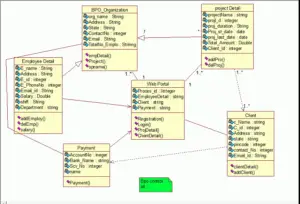BPO Management System Project Using UML Diagram:
In this project we will discuss the Bpo management system and how can we use a UML diagram. we will also see the code as well.
BPO Management System Using UML Diagram
Business process outsourcing (BPO) is a subset of outsourcing that involves the contracting of the operations and responsibilities of specific business functions (or processes) to a third-party service provider. Originally, this was associated with manufacturing firms, such as Coca Cola that outsourced large segments of its supply chain. In the contemporary context, it is primarily used to refer to the outsourcing of business processing services to an outside firm, replacing in-house services with labor from an outside firm.
BPO is typically categorized into back-office outsourcing – which includes internal business functions such as human resources or finance and accounting, and front-office outsourcing – which includes customer-related services such as contact center services.
BPO that is contracted outside a company’s country is called offshore outsourcing. BPO that is contracted to a company’s neighboring (or nearby) country is called nearshore outsourcing
SYSTEM REQUIREMENTS:
Software and Hardware
SOFTWARE REQUIREMENTS
Front end: Java
Back end: Oracle
Software tool: Rational rose
HARDWARE REQUIREMENTS:
Any pc with a minimum 4Gb RAM and 500Gb storage.
System Design Diagram
There are two types of system diagrams and that is:
- Static Diagram
- Dynamic Diagram
Static Diagram
Java projects CLASS DIAGRAM
A class diagram is used to model the structure of software.
Contents:
Class, interfaces, collaborations, relationships, notes, grouping things, annotation things.
Structural things: classes
Annotation things: Note
Relationships: Association, Generalisation, Realisation, Dependency
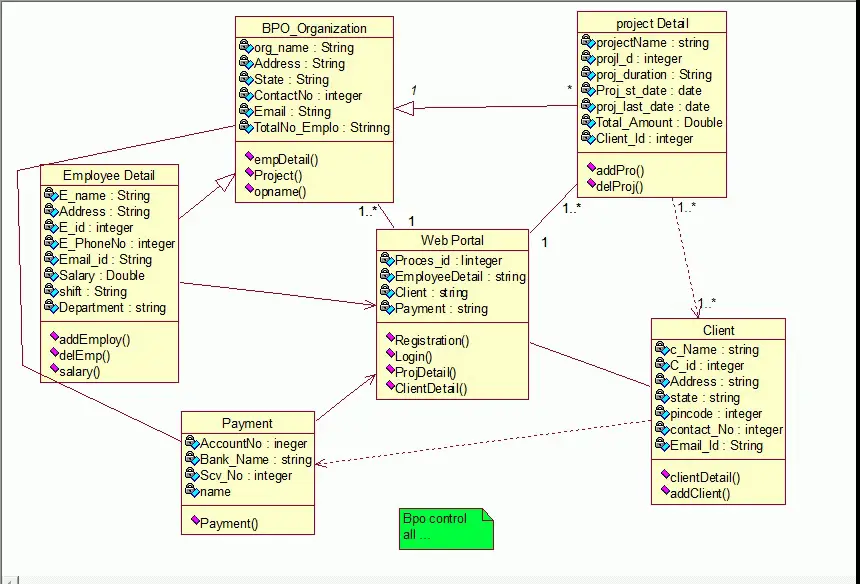
OBJECT DIAGRAM
Object diagram models the instance of classes from the class diagram. Object diagrams represent the static part of the system. Contents: objects, links, annotation things, grouping things
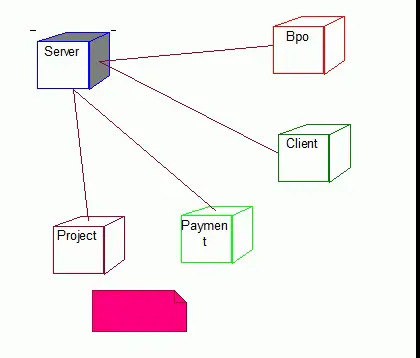
COMPONENT DIAGRAM
Component Diagram models the Physical aspects of a system. A component diagram represents the static part of a system.
Contents:
Component, interface, relationships, and it also contains Grouping things, annotations things.
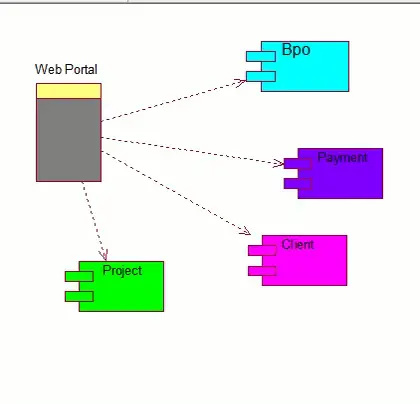
DYNAMIC DIAGRAMS
1. USECASE DIAGRAM
A usecase diagram is used for modeling the dynamic aspects of a system.
It specifies what the system does.
Contents:
Usecase, actors, relationships, annotation things, grouping things, constraints, tagged values.
Actors: bpo org, client.
Relationships: unidirectional association
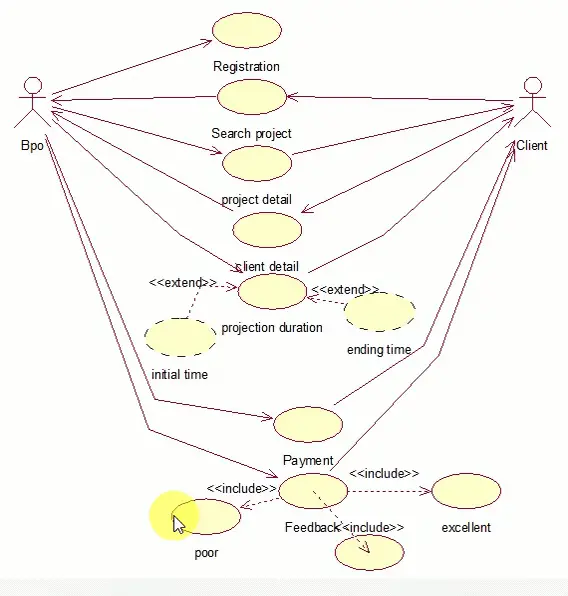
2) INTERACTION DIAGRAM
An interaction diagram is used to design the dynamic aspects of the system.
Contents: objects, links, messages
Sequence diagram:
A sequence diagram is one of the two interaction diagrams. It emphasizes on time ordering of messages
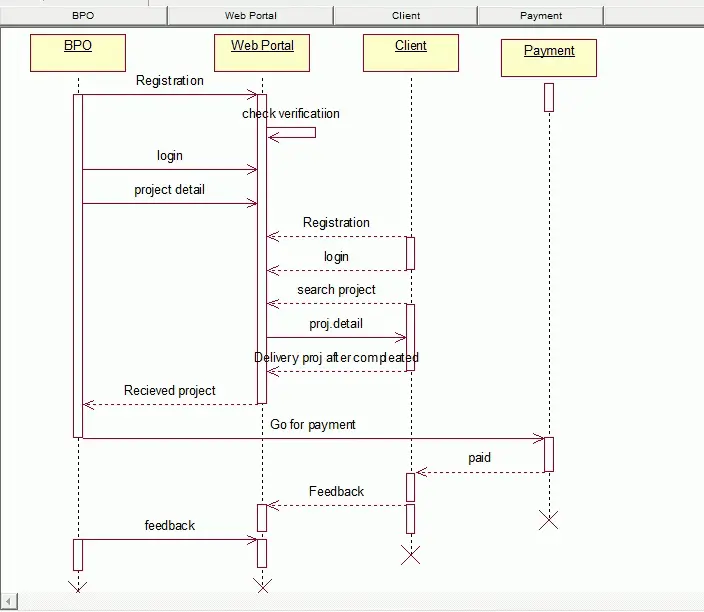
Collaboration diagram:
A collaboration diagram gives the structural organization of objects
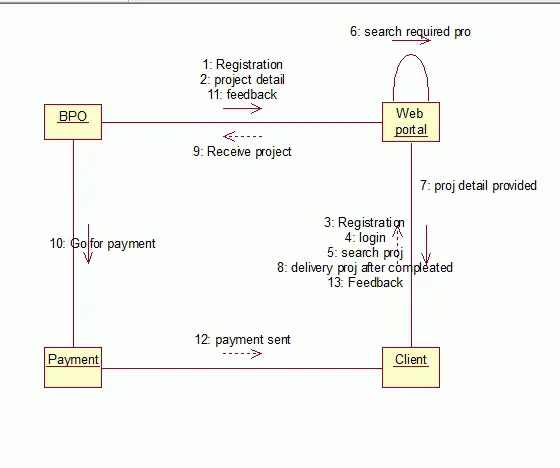
3) ACTIVITY DIAGRAM
The activity diagram is similar to the flow chart. It represents the flow of execution from one activity to another activity.
Contents:
Start, end, action, branching, fork, join, transition, swimlane.
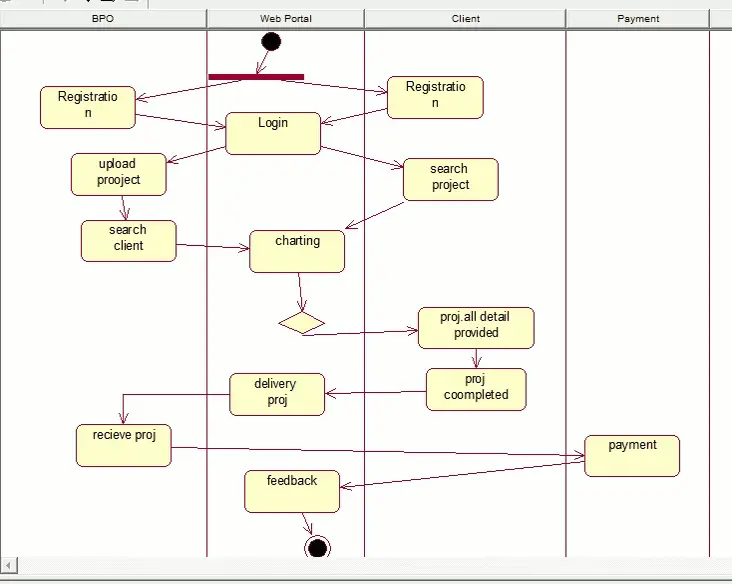
4) STATECHART DIAGRAM
A statechart diagram is a state machine focussing on the flow of control from one state to another state.
Contents:
initial state, final state, state, transition.
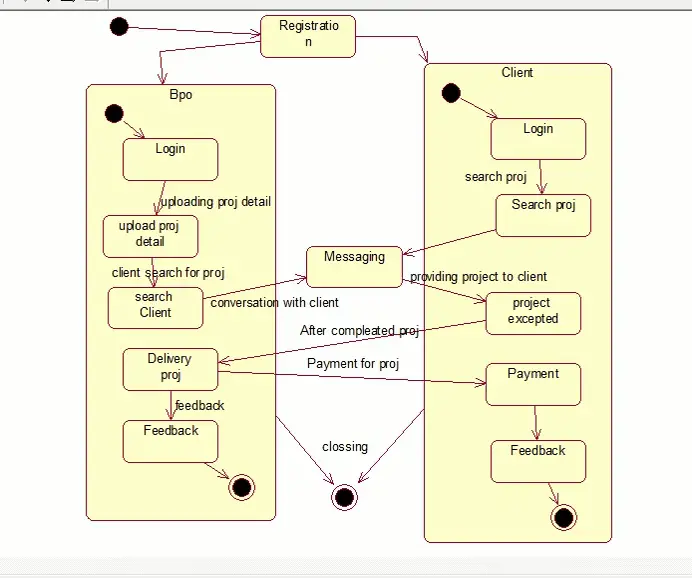
SYSTEM IMPLEMENTATION:
Creating credentials:
If the user wants to hire (or) work then he has an account, so he must do registration. So the user has to register their account in the given form, so the user can make hire (or) work will be happening in the bpo.
Upload (or) post the project
If the user wants to post the project into the bpo, they must select hire when they are login, So the user can post their project and the give whole project details to the bpo. Because those who want to work on the project, design like that.
Browsing the projects
If the user wants to work on projects, they should select the project, though they select projects by browsing process. The user must create the project with whatever project details are provided by bpo. After completion of designing the project, they send it to bpo.
Feedback
Here feedback only gives to the user who is selected to hire, after delivering the project by bpo. They give feedback on how the work is.
Conclusion:
Overall, outsourcing seems to be an important trend. There are some cons to outsourcing, but I believe that it has helped us grow and compete in a healthy way, especially in India. Outsourcing has increased globalization, and everyone gains when it comes to expanding into more markets. It also helps create jobs and compete giving a competitive advantage. If it helps cut costs to outsource jobs to a country where the wages are cheaper, then that will help any company grow and eventually create more jobs. Indians seem to view the United States as what they want to become. Becoming more westernized is very
important to them.
Download:
Here you will find the complete source code of the program. You can find all sources as well as instructions to implement the program. For that click on the download button and download the complete file.
